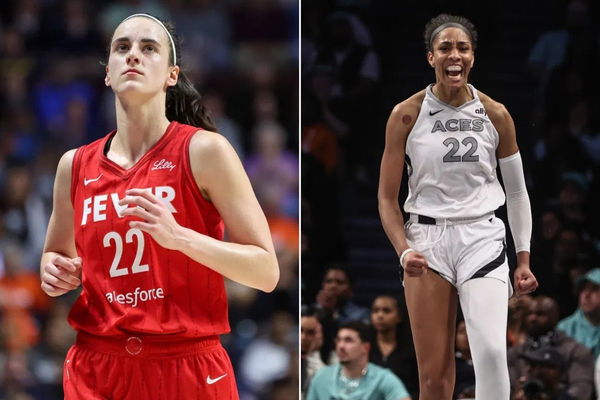The WNBA has been on an impressive trajectory, marked by significant growth in viewership, attendance, and overall marketability. From the rise of superstar players like Caitlin Clark and Angel Reese to record-breaking team valuations and multi-million dollar sponsorship deals, the league is in the midst of an unprecedented era of success. However, despite these positive developments, the WNBA continues to face challenges in becoming profitable. Here’s a closer look at why the league, despite its record-breaking year, still struggles to turn a profit.
The Disparity in Revenue Between the WNBA and Other Major Sports Leagues
While the WNBA has seen its revenues rise in recent years, the gap between its earnings and those of leagues like the NBA remains vast. The WNBA’s projected revenue for 2024 is around $200 million, a far cry from the NBA’s expected $13 billion in revenue for the same year. Despite the growing popularity of women’s basketball, the league’s revenue model still lags behind that of its male counterpart.
A key factor contributing to this disparity is the WNBA’s reliance on local revenue streams. Teams generate revenue from ticket sales, parking, concessions, and local media rights, which are not evenly distributed across the league. This results in a significant revenue gap between high-profile teams like the Las Vegas Aces and lower-profile teams that struggle with attendance and media coverage.

Limited TV Revenue and Broadcast Deals
One of the WNBA’s biggest financial hurdles is its current media rights deal, which is far less lucrative than the TV deals signed by other major sports leagues. In 2024, the WNBA’s TV deal is worth around $60 million, with individual teams receiving just $2 million from the agreement. This figure pales in comparison to the NBA’s massive TV contracts, which have helped propel the league to new financial heights.
However, a landmark $2.2 billion media rights deal with Disney, Amazon Prime, and NBC Universal, set to begin in 2026, could transform the WNBA’s financial landscape. The hope is that this new deal will boost national exposure and increase the league’s media value, but it remains to be seen if it will be enough to generate consistent profitability.

Player Salaries and International Play
Another factor holding back the WNBA’s profitability is the relatively low salaries of its players, particularly when compared to their NBA counterparts. Caitlin Clark, for example, makes a base salary of around $76,000, while Breanna Stewart, the reigning MVP, earns $205,000. Although endorsement deals help boost player earnings, many WNBA players still need to play overseas during the off-season to supplement their income.
The reliance on international leagues is not ideal for the sustainability of the league, as it forces players to work year-round, risking injuries and burnout. However, it is a financial necessity for many, as overseas leagues often offer significantly higher pay. The WNBA’s salary structure and its reliance on off-season income from foreign leagues reflect a broader challenge of financial sustainability for the league.
Expansion and Ownership Challenges
Despite growing interest in the WNBA, the league still faces challenges with ownership models and expansion. Recent expansions, such as the Golden State Valkyries joining the league in 2025, signal the increasing demand for women’s basketball teams. However, the league’s financial structure is still dependent on its relationship with the NBA and its owners.
In 2002, the WNBA’s owners received a 50% stake in the league, and in 2022, outside investors purchased a 16% stake for $75 million, leaving only 42% for the WNBA and its original owners. This means a substantial portion of the league’s national revenue is shared with the NBA and outside investors, making it harder for the WNBA to retain earnings and reinvest in player salaries and league operations.

The Strain of Operating at a Loss
Despite its rising profile, the WNBA has historically operated at a loss, with estimates suggesting that the league could lose up to $50 million in 2024. This financial strain is a result of the high operational costs of running a professional sports league, including player salaries, marketing, venue operations, and other expenses. The league’s inability to generate enough revenue to cover these costs means that profitability remains elusive.
While some teams are more financially successful than others, the league as a whole still faces challenges in balancing its books. The disparity in financial health across teams further complicates efforts to achieve profitability on a league-wide level.
The Need for a More Sustainable Business Model
The WNBA is at a crossroads, with the need for a more sustainable business model becoming increasingly urgent. Players, while benefiting from marketing opportunities and sponsorship deals, are still seeking a larger share of the league’s revenue. The current collective bargaining agreement (CBA), signed in 2020, allows players to earn up to $500,000 in total compensation through salary and marketing deals, but only a few players reach this threshold.
The WNBA is also looking to create a more equitable revenue-sharing model, where a larger portion of league earnings is returned to the players. However, the league’s financial situation makes this a delicate balancing act. The upcoming CBA negotiations will likely center on how to allocate a greater share of revenue to the players while ensuring the league’s long-term financial stability.
Conclusion: Can the WNBA Become Profitable?
The WNBA’s record-breaking year is a testament to the growing interest in women’s sports and the potential for the league to achieve greater financial success. However, despite all the progress, the WNBA is not yet profitable, and it faces several significant challenges in its pursuit of sustainability.
With rising team valuations, lucrative sponsorships, and new media rights deals on the horizon, the league is on the right path. However, much work remains to be done in creating a more balanced and sustainable financial model that can support its players and teams in the long term. The hope is that with continued growth, the WNBA will eventually close the financial gap with other major leagues and become a more profitable and self-sustaining entity. For now, though, the league is still navigating the complexities of building a profitable business in a rapidly changing sports landscape.





